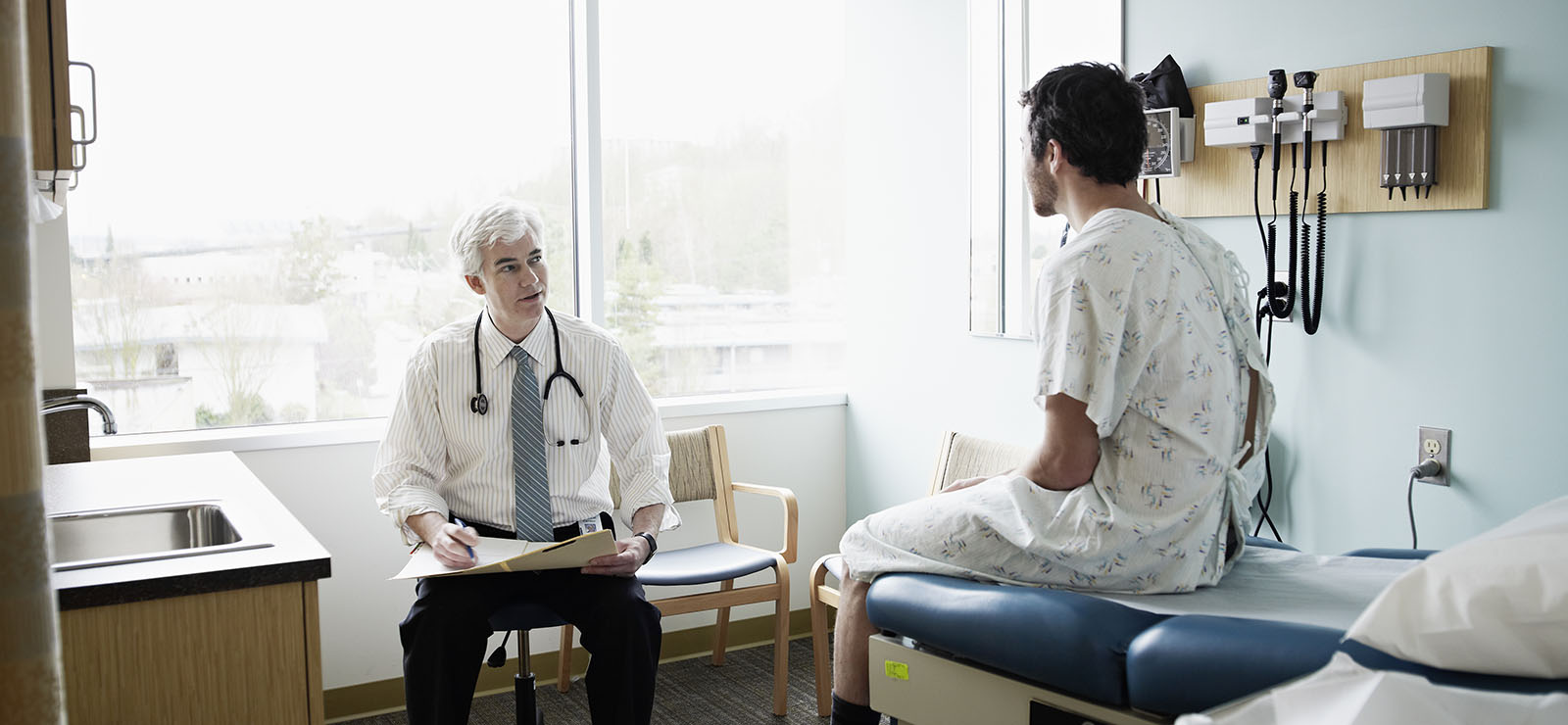April 20, 2022

Human papillomavirus (HPV) isn’t exactly something you chat about over lunch with friends. And it’s definitely not a crowd-pleaser when it comes to casual conversation at parties. But since nearly all sexually active adults will get an HPV infection in their lifetime, it’s a subject worth exploring. Even if you have some basic HPV knowledge, you might be surprised by some of the facts we’ve uncovered.
If you don’t know much about HPV, here’s the skinny: This group of more than 100 virus types affects both men and women and is typically spread through sexual contact — but not always. Depending on the strain of the virus, HPV can lead to the development of warts and various forms of cancer.
The kicker is that there is currently no cure for HPV infection. But the good news is that you can protect yourself by getting the recommended vaccination.
Here are six other tidbits to know about HPV:
1. Human Papillomavirus Infection Is a Super Common Virus
HPV is the most common sexually transmitted virus in America, infecting approximately 80 million people — many don’t even know they have it. More than 42 million of those Americans currently have HPV strains that cause diseases. And unfortunately, another 14 million Americans become infected each year.
Many people with HPV never develop symptoms or illness, and 9 out of 10 infections go away on their own within two years. But for a small minority, the virus persists for years and may develop into cancer decades after the initial infection.
2. Not All HPV Strains Cause Cancer
Most experts agree that the biggest medical concern associated with HPV is cancer. HPV causes about 3% of all new cancer cases with close to 36,000 cases of cancer a year, including:
- 99% of cervical cancer
- 90% of anal cancer
- 70% of oropharyngeal (throat) cancer
- 65% of vaginal cancers
- 50% of vulvar cancers
- Some cancers of the penis and mouth
Only about 12 types of HPV are considered high risk, meaning that ongoing infection with one of them could eventually lead to cancer. But that doesn’t mean other strains of HPV aren’t concerning. They cause all types of warts, including genital, common, plantar and flat warts commonly found on or near the genitals, anus, mouth or throat.
3. HPV Transmission Is Not Always Sexual
It’s true that 40 types of HPV spread through direct sexual contact to the genital area, mouth and throat. But there are other strains of the virus that don’t require sexual contact.
Certain strains of HPV can spread through skin-to-skin contact or even from shared surfaces— think public showers or swimming pools. It doesn’t matter if the infected person doesn’t have any obvious symptoms (such as warts) or if it’s been years since they were first infected.
4. There Is No Blood Test for HPV
Like many other viral infections, there is no blood test to diagnose HPV. That means that without visual symptoms, many people do not realize they are infected.
For women, it’s a little easier to detect HPV because the infection causes cervical changes. Doctors screen women for HPV during a routine Pap smear (Pap test), which can identify abnormal cells in the cervix.
In men, HPV is detected by visual inspection only when a man has an HPV strain that causes genital warts. But each year, HPV causes more than 12,000 cases of cancer in men — that’s one-third of all cases — with mostly throat, anal and penile cancers.
5. HPV Symptoms May Not Show Up for Years After Infection — If They Show Up at All
The frustrating aspect of HPV is that symptoms, if any develop, don’t always match up with the initial infection. Symptoms can arise weeks, months or even years after you become infected.
The most common symptoms of HPV are cellular changes in the cervix and genital warts, which may be:
- Clustered (which gives them a cauliflower-like appearance)
- Flat or raised
- Itchy
- Tender or painful
Remember that HPV also causes all types of warts, anywhere on your body. If symptoms do arise, your doctor can help you treat the warts and proactively screen for cancers associated with HPV.
6. HPV Vaccination Is Not Just for Adolescents
The vaccination is recommended for both boys and girls beginning at age 11 or 12, but you can get vaccinated up to age 26. People older than age 26 can talk to their doctor about their option for HPV vaccination.
Experts recommend two doses of the HPV vaccination — it’s nearly 100% effective at guarding against cancer-causing HPV strains. A third dose is recommended for some people, including those who receive their first HPV vaccine after the age of 14. The most common side effects are pain, redness and swelling in the arm that received the shot.
Even if you already have HPV, it’s still important to get vaccinated. It will protect you against additional HPV strains.
Next Steps and Useful Resources
- Want to discuss more with a primary care provider? Find one today.


